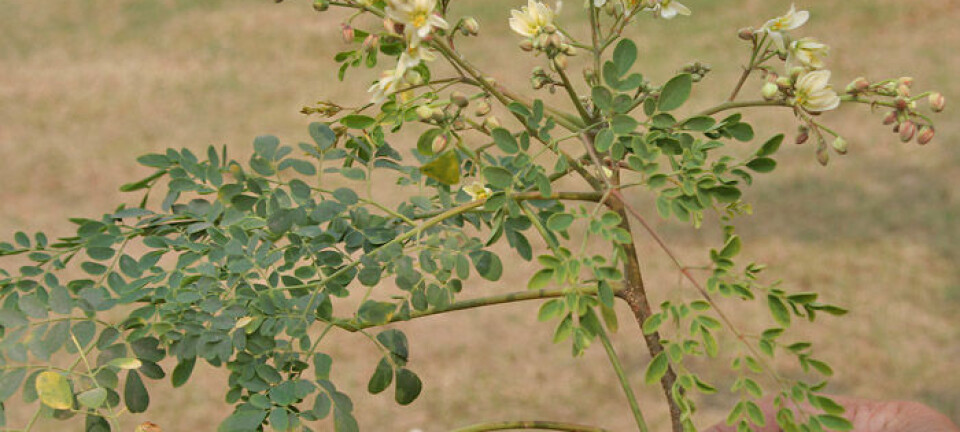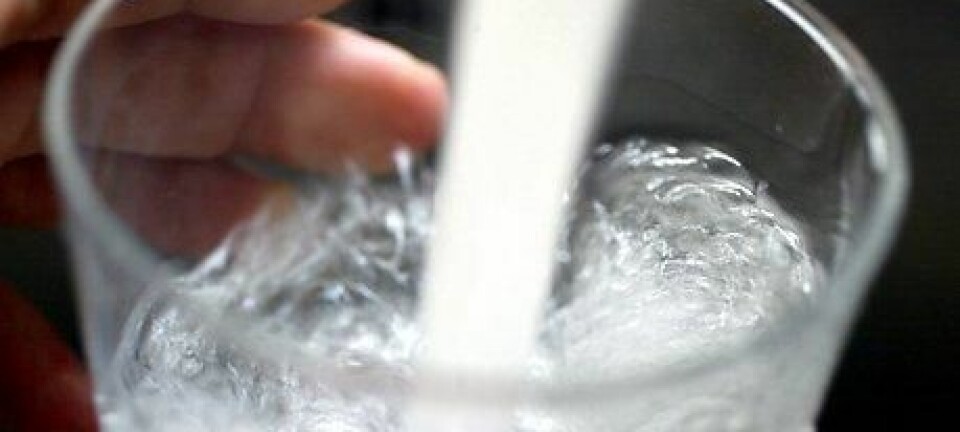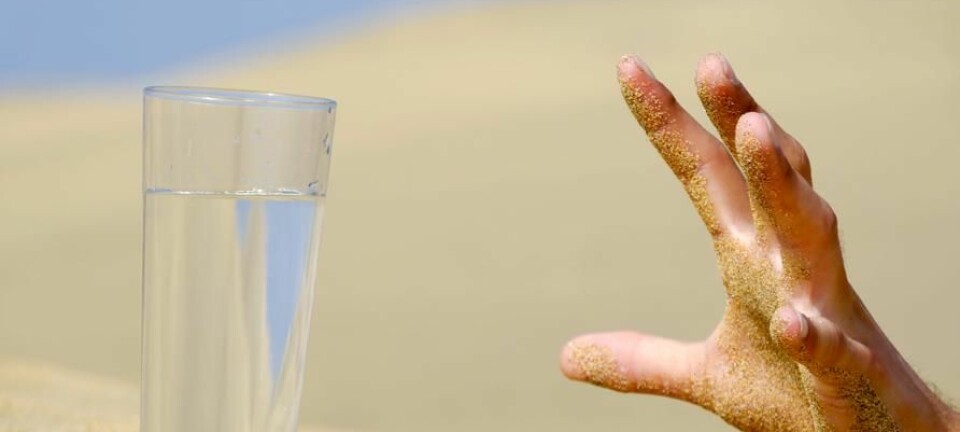
Research gives clean drinking water for millions of Vietnamese
Geological studies carried out by Danish researchers are giving hope to the millions of people in Southeast Asia who drink groundwater contaminated by arsenic – a highly poisonous substance.
Changes in their pigmentation and chapped skin are their first symptoms. Later, millions of people in Southeast Asia risk developing cardio-vascular diseases and cancer because their drinking water is polluted.
This drinking water comes from underground sources that contain arsenic, which is extremely hazardous to the health.
“In Vietnam alone there are at least three million people at risk,” says Dieke Postma, a senior researcher at the Geological Survey of Denmark and Greenland (GEUS). “But there is also a gigantic health problem in countries such as Bangladesh, India and Cambodia. A total of about one hundred million people live in the risk zones.”
Together with Danish and Vietnamese colleagues, Postma has studied the groundwater reserves along the Red River in Vietnam for eight years.
Arsenic poisoning or cholera
In Vietnam alone there are at least three million people at risk. But there is also a gigantic health problem in countries such as Bangladesh, India and Cambodia. A total of about one hundred million people live in the risk zones.
“Arsenic occurs naturally in the groundwater in the plains around the great rivers that have their sources in the Himalayas,” says the GEUS researcher. “In the area of the Red River in Vietnam, for example, there is up to 80 times as much arsenic in the groundwater as the safety threshold recommended by the World Health Organization (WHO).”
WHO warns people not to drink water with more than 10 micrograms of arsenic per litre. People who drink water containing more of this health hazard have an increased risk of poisoning and of becoming seriously ill.
Most recent underground layers are the most toxic
The groundwater along Vietnam’s Red River is not equally poisonous everywhere.
“We’ve discovered that there are very great differences between how much arsenic there is in the groundwater, depending on where we’ve drilled for samples,” says Postma. “The amount of arsenic can vary colossally over a stretch of just a few hundred metres.”
Arsenic occurs naturally in the groundwater in the plains around the great rivers that have their sources in the Himalayas.
He and the other geologists studied why the groundwater at some locations in the Red River’s delta is very toxic, while in other locations it’s almost pure. As a result, the geologists can now say where the Vietnamese authorities should drill to find the cleanest water.
“Over the ages, the river has moved back and forth between courses through the plains,” he says. “In the meantime, sand and clay that the river has washed down from the Himalayas has settled as sedimentary layers at different times. By analysing the sand from the underground at various locations in the river plain, we have discovered that there is least arsenic in the oldest sand sedimentary layers.”
The studies show that the groundwater from the newest underground layers is the most toxic, while in the oldest layers the water contains virtually no arsenic. The oldest sedimentary layers comprise sand and clay which was washed down from the Himalayas up to 6,000 years ago.
Accordingly, the researcher says, the Vietnamese should drill in the oldest underground layers to find drinking water that contains the least arsenic.
Lack of oxygen releases arsenic to groundwater
We’ve discovered that there are very great differences between how much arsenic there is in the groundwater, depending on where we’ve drilled for samples. The amount of arsenic can vary colossally over a stretch of just a few hundred metres.
Arsenic is a chemical substance that binds to iron oxides. These iron oxides are found in the mud transported by the Red River from the Himalayas and deposited in the river plains.
“As long as the sand and mud are transported by the river, they are in contact with the oxygen in the atmosphere, so the iron oxides are stable,” he says. “But when the sand and mud have been deposited in the underground and then covered by groundwater, they are no longer in contact with the oxygen in the atmosphere.”
This lack of oxygen means the iron oxides are so unstable that the arsenic can unbind from them and the poisonous arsenic is released into the groundwater.
Peasant farmers only have access to water containing arsenic
Arsenic is released into the groundwater in the flood plain around Hanoi in such large quantities that all the water pumped up in the area is contaminated.
Over the ages, the river has moved back and forth between courses through the plains. In the meantime, sand and clay that the river has washed down from the Himalayas has settled as sedimentary layers at different times. By analysing the sand from the underground at various locations in the river plain, we have discovered that there is least arsenic in the oldest sand sedimentary layers.
Despite this, there are many million Vietnamese living in the rural areas along the Red River who drink the water.
“When it rains, they collect rainwater, which they use as drinking water. But in the dry periods they only have access to the water that is pumped up from the underground. Often they don’t even know that the water is contaminated by arsenic, or they have no other choice.”
Chronic poisoning
“The authorities started to drill after drinking water in the underground about 20 years ago to prevent people from getting ill from dysentery and cholera when they drank water taken directly from the rivers,” says the researcher.
“But now people risk getting chronic arsenic poisoning because they drink contaminated groundwater.”
The symptoms of chronic arsenic poisoning are first seen after ten years.
“And now the first Vietnamese are starting to show these symptoms,” says Postma.
To get an understanding of why arsenic is found the Red River’s delta, the researchers analysed the sand deposits in the underground. One parameter they measured was how quickly the arsenic is released from the iron oxides.
These measurements showed that the speed at which the arsenic unbinds from the iron oxides is lower when it is in the oldest sand deposits – the sand that formed sedimentary layers in the underground a very long time ago.
The geologists also discovered that the iron oxides – and, thus, the arsenic – are washed out of the sand over time. Older underground layers therefore release less arsenic – and they release far less arsenic than newer deposits.
Cleaner water
Since the end of the 1990s, when the authorities first discovered that the Southeast Asian groundwater was full of arsenic, many scientists have studied the poison’s behaviour. But Postma and his colleagues are the first to study how the age of the underground is related to the occurrence of arsenic in the groundwater.
“Over time, our results can surely be used to indicate places where sinking wells for water can find the least contaminated groundwater,” says Postma.
“This is probably the path to take to ensure that many millions of people living in Southeast Asia can drink water with the lowest amount of arsenic. But there is a need for further studies, new wells and more money, so, unfortunately, this will not happen for the time being.”
--------------------------------
Read the Danish version of this article at videnskab.dk
Translated by: Michael de Laine
Scientific links
External links
- Dieke Postma's profile
- Water Resources Research in Vietnam – a Danida Enreca Project
- About arsenic (Wikipedia)








